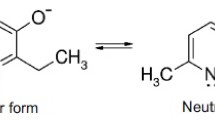Abstract
The liver glutathione content was measured after oral administration of 1,1-dichloroethylene (vinylidene chloride = VDC; dissolved in olive oil) and its significance for the metabolism and hepatotoxicity of VDC was investigated. After treatment with 1000 mg/kg VDC p.o., glutathione decreased to 33% of the control values within 4 h but returned to the control level after 24 h. An identical fall in glutathione after VDC administration was found to occur in animals which had been fasted for 18 h. In these animals the baseline values of glutathione were lowered by 21%. The depletion of glutathione was dependent on the dosage of VDC.
The conversion rate of VDC by the isolated perfused livers was 7.64 μmoles/g liver after 3 h-perfusion, if 5000 ppm of VDC were supplied in the gas phase. Lowering the glutathione content to 15% of the normal value (by diethylmaleate, 25 μmoles added directly to the perfusate) resulted in a reduction of VDC conversion by 18%. Furthermore the viability (with the lactate/pyruvate ratio serving as the parameter) of the liver was distinctly depressed.
No effect on viability nor on metabolization rate was noted when perfusing the livers of 18-h fasted animals. The concentrations of the glutamate-oxaloacetate transaminase (SGOT) and glutamate-pyruvate transaminase (SGPT) in the perfusate failed to show an increase. These findings indicate that there is no correlation between the liver glutathione level and the increased lethality of VDC in fasted rats.
Zusammenfassung
Der Leberglutathiongehalt wird nach oraler Gabe von 1,1-Dichloräthylen (Vinylidenchlorid = VDC; in Olivenöl gelöst) gemessen und seine Bedeutung für Metabolismus und Hepatotoxizität von VDC untersucht. Nach oraler Applikation von 1000 mg/kg VDC sinkt Glutathion in 4 Std auf 33% der Kontrollwerte ab. Nach 24 Std sind die Kontrollwerte wieder erreicht. Der Abfall ist bei 18 Std-Nüchterntieren, die um 21% erniedrigte Ausgangswerte aufweisen, gleich. Die Glutathiondepletion ist dosisabhängig.
Die Metabolisierungsrate von VDC in der isoliert perfundierten Leber beträgt nach 3 Std Perfusion, mit 5000 ppm VDC in der Gasphase, 7,64 μmol/g Leber. Die Rate ist um 18% erniedrigt, wenn der Glutathiongehalt mit Diäthylmaleat (25 μmol direkt ins Perfusat) auf 15% der Kontrollwerte gesenkt wird. Unter diesen Perfusionsbedingungen wird nach Diäthylmaleatzugabe die Funktionsfähigkeit (als Parameter hierfür dient der Lactat/Pyruvatquotient) der Leber eingeschränkt.
Die Funktionsfähigkeit der Leber und die Metabolisierungsrate von VDC wird durch 18stündiges Fasten der Tiere nicht beeinflußt. Die Konzentration von Serumglutamatoxalacetattransaminase (SGOT) und Serumglutamatpyruvattransaminase (SGPT) im Perfusat ist nicht erhöht. Diese Befunde deuten darauf hin, daß keine Beziehung zwischen dem Leberglutathiongehalt und der erhöhten Letalität von VDC mit Nüchterntieren besteht.
Similar content being viewed by others
References
Bartsch, H., Malaveille, C., Montesano, E., Tomatis, L.: Tissue-mediated mutagenicity of vinylidene chloride and 2-chlorobutadiene in Salmonella typhimurium. Nature 255, 641–643 (1975)
Bergmeyer, H. U.: Methoden der enzymatischen Analyse, 3. Aufl., Bd. II, S. 2491, 1510. Weinheim: Verlag Chemie 1974
Bonse, G., Urban, Th.: Oxidative metabolism of chlorinated ethylenes. Naunyn-Schmiedebergs Arch. Pharmacol. 287 (Suppl.), R101 (1975)
Bonse, G., Urban, Th., Reichert, D., Henschler, D.: Chemical reactivity, metabolic oxirane formation and biological reactivity of chlorinated ethylenes in the isolated perfused rat liver preparation. Biochem. Pharmacol. 24, 1829–1834 (1975)
Boyland, E., Chasseaud, L. F.: The effect of some carbonyl compounds on rat liver glutathione levels. Biochem. Pharmacol. 19, 1526–1528 (1970)
Ellman, G. L.: Tissue sulfhydryl groups. Arch. Biochem. Biophys. 82, 70–77 (1959)
Greim, H., Bonse, G., Radwan, Z., Reichert, D., Henschler, D.: Mutagenicity in vitro and potential carcinogenicity of chlorinated ethylenes as a function of metabolic oxirane formation. Biochem. Pharmacol. 24, 2013–2017 (1975)
Heidelberger, C.: Chemical carcinogenesis. Ann. Rev. Biochem. 44, 79–121 (1975)
Jaeger, R. J., Coffman, L.: Hepatotoxicity of 1,1-dichloroethylene. A proposed mechanism. Abstr. Sixteenth Ann. Meet. Soc. Tox., p. 113. Toronto 1977
Jaeger, R. J., Conolly, R. B., Murphy, S. D.: Effect of 18 h fast and glutathione depletion on 1,1-dichloroethylene-induced hepatotoxicity and lethality in rats. Exp. Mol. Pathol. 20, 187–198 (1974)
Jerina, D. M., Daly, J. W.: Arene oxides: A new aspect of drug metabolism. Science 185, 573–582 (1974)
Jones, B. K., Hathway, D. E.: The biological fate of vinylidene chloride in rats. Chem.-Biol. Interact. 20, 27–41 (1978)
Leibman, K. C., Ortiz, E.: Abstr. Sixth Int. Cong. Pharmacol., p. 257. Helsinki 1975
Maruyama, E., Kojima, K., Higashi, T., Sakamoto, Y.: Effect of diet on liver glutathione and glutathione reductase. J. Biochem. 63, 398–399 (1968)
Miller, L. L., Bly, C. G., Watson, M. L., Bale, W. F.: The dominant role of the liver in plasma protein synthesis. J. Exp. Med. 94, 431–453 (1951)
Mitchell, J. R., Potter, W. Z., Hinson, J. A., Snodgrass, W. R., Timbrell, J. A., Gillette, J. R.: In: Handbook of Experimental Pharmacology, Vol. 28/3, p. 383. Berlin-Heidelberg-New York: Springer 1975
Oesch, F.: Mammalian epoxide hydrases: Inducible enzymes catalysing the inactivation of carcinogenic and cytotoxic metabolites derived from aromatic and olefinic compounds. Xenobiotica 3, 305–340 (1973)
Reichert, D., Bashti, N.: Metabolism and disposition of 1,1-dichloroethylene in the isolated blood-perfused liver of the rat. Naunyn-Schmiedebergs Arch. Pharmacol. 293 (Suppl.), R255 (1976)
Reichert, D., Henschler, D.: Uptake and hepatotoxicity of 1,1-dichloroethylene by the isolated blood-perfused rat liver. Int. Arch. Occup. Environ. Health 41, 169–178 (1978)
Schimassek, H.: Metabolite des Kohlenhydratstoffwechsels der isoliert perfundierten Rattenleber. Biochem. Z. 336, 460–467 (1963)
Sims, P., Grover, P. L.: Epoxides in polycyclic aromatic hydrocarbon metabolism and carcinogenesis. Adv. Cancer Res. 20, 165–274 (1974)
Author information
Authors and Affiliations
Rights and permissions
About this article
Cite this article
Reichert, D., Werner, H.W. & Henschler, D. Role of liver glutathione in 1,1-dichloroethylene metabolism and hepatotoxicity in intact rats and isolated perfused rat liver. Arch. Toxicol. 41, 169–178 (1978). https://doi.org/10.1007/BF00354088
Received:
Issue Date:
DOI: https://doi.org/10.1007/BF00354088




